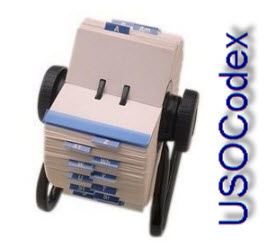USOCodex | USOC Database
Download Files | TelcoMgr | Telecom Auditors & Expense Managers | ABCI Consultants | Prices & Buy Online
Once upon a time, long ago in the US, a telephone company monopoly existed. It was first known as the Bell Telephone Company and later became known as the American Telephone and Telegraph Company, which evolved to be known as the AT&T Corporation.
Under the Bell System monopoly (following the Communications Act of 1934), the Bell System owned the phones and did not allow interconnection of separate phones or other terminal equipment. Phones were generally hardwired, or at times used proprietary Bell System connectors.
This began to change with the case Hush-A-Phone v. United States [1956] and the FCC's Carterfone [1968] decision, which required Bell to allow some interconnection, which culminated in registered jacks.
Modular jacks and connectors were introduced by the Bell System in the 1970s under a 1976 FCC order ending the use of protective couplers or KSUs (key telephone service unit). The module connectors had strict Registered uniform specifications so they could be universally used across the network. The Bell System issued the specifications for the modular connectors and their wiring as Universal Service Ordering Codes (USOC), which were the only standard at the time.
When the US telephone industry was opened to more competition in the 1980s, the specifications were made a matter of US law, ordered by the Federal Communications Commission (FCC) and codified in the Code of Federal Regulations, 47 CFR 68, subpart F.
In January 2001, the FCC turned over responsibility for standardizing connections to the telephone network to a new private industry organization, the Administrative Council for Terminal Attachment (ACTA). The FCC removed Subpart F from the CFR and added Subpart G, which delegates the task to the ACTA.
The ACTA published a standard called TIA/EIA-IS-968 which contained the information that was formerly in the CFR. The current version of that standard, called TIA-968-A, specifies the modular connectors at length, but not the wiring. Instead, TIA-968-A incorporates a standard called T1.TR5-1999 by reference to specify the wiring.
Some Carriers use the USOC acronym to represent one of the following:
-
Universal Service Order Code (We have found to be the most common or popular)
-
Uniform Service Order Code


 Previous USOC Page ...
Previous USOC Page ...